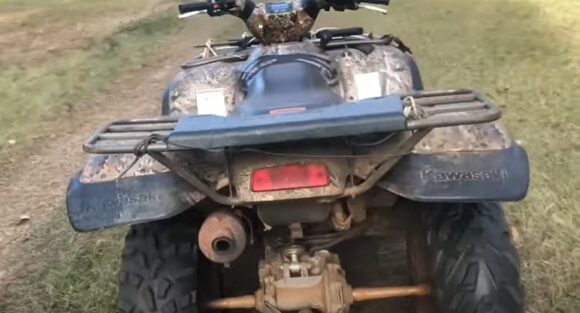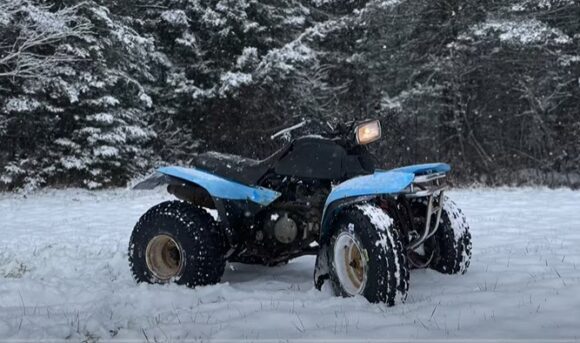The Kawasaki Prairie 650 is a popular ATV among off-road enthusiasts due to its power and versatility. This ATV is renowned for its durability and dependability, but it can experience problems and require maintenance like any other vehicle.
The common problems with Kawasaki Prairie 650 include the following:
- Carburetor Problems
- Actuator Problems
- Transmission Problems
- Clutch Problems
- Poor Idling
In this article, we will look at some common issues that owners of the Kawasaki Prairie 650 may encounter, as well as potential solutions for keeping the vehicle in excellent operating condition.
Continue reading to learn more about Kawasaki Prairie 650 problems and their solutions.
Kawasaki Prairie 650 Problems

This Prairie 650 ATV is quite durable and dependable. However, even the toughest machines can run into problems. But there is no need to worry as these issues are solvable.
The most common problems with this ATV and how to fix them are explained below.
1. Actuator Problems
The Prairie 650 is known to have issues with its stock actuators for the KEBC (Kawasaki Engine Brake Control) and 2WD/4WD functions.
Most of the time, these actuators break within a few years, which can cause problems like fuel leaking through the rings and into the oil supply or mud in the actuator motors, which causes the 2WD/4WD indicator to switch back and forth.
In addition, the aluminium block in the 4WD actuator has severely deteriorated.
The Fix:
To solve issues related to the KEBC actuator and fork, follow the troubleshooting steps below:
- First, disassemble the stock actuators for cleaning, lubrication, and resealing. To do this, you will need to remove the actuator from the ATV and take it apart carefully.
- Once the actuator is disassembled, thoroughly clean all the parts with a degreaser and a soft brush. You can use a can of compressed air to remove any debris or dust from the parts.
- Next, lubricate the moving parts of the actuator with a high-quality lubricant. You can use a silicone-based lubricant or a spray lubricant that is safe for use on plastics.
- After lubricating the parts, reassemble the actuator carefully and ensure all parts fit together correctly.
To fix wear in the 4WD actuator aluminum block, follow the troubleshooting steps below:
- Replace the shaft with a nylon roller and a washer to hold the roller on. To do this, you will need to remove the aluminum block from the ATV and take it apart.
- Once the block is disassembled, remove the old shaft and replace it with a nylon roller and a washer. Ensure the roller fits snugly in the block and does not move around.
- After replacing the shaft, reassemble the block carefully. Apply a silicone/gasket maker to the gasket to create a good seal.
2. Transmission Problems
According to many users, the Kawasaki Prairie 650 ATV shifter is increasingly hard to use and clunky. As the users try to climb out of a mud hole, the front axle does not seem to work in low 4×4, and when moving in 2×2, it makes a light grinding sound.
It is suspected that the front differential may have suddenly grabbed dirt while spinning at high speed or that the lock lever was partially let go, causing damage to the transmission.
The Fix:
Here is a step-by-step guide on how to fix common issues related to transmission jumping gears and loose shifters on your Kawasaki Prairie 650:
- Start by checking where the shifter goes into the motor. Look for loose or damaged components in this area, such as a worn shifter shaft or gear selector drum.
- If everything looks okay in this area, check the motor mounts. Tighten any loose motor mounts and make sure they are properly secured. Loose motor mounts can cause the transmission to jump gears or cause other issues.
- Next, check the shift linkage. The shift linkage connects the shifter to the transmission and moves the gears. Make sure the linkage is properly adjusted and lubricated.
- If the linkage is not properly adjusted, you may need to adjust it. To do this, locate the linkage on your Kawasaki Prairie 650. It is usually located near the front of the ATV.
- Use a wrench to loosen the locknut on the linkage, and then adjust the linkage rod until the gears shift smoothly. Tighten the locknut when you are finished adjusting the linkage.
- Finally, check the condition of the shifter itself. Make sure it is not worn or damaged and that it is properly lubricated.
3. Clutch Problems
The stock rear secondary clutch in the 2002 Prairie 650 has been known to wear out prematurely, causing a significant decrease in top speed. This can frustrate riders looking to get the most out of their ATVs. However, there is a fix for this problem.
The Fix:
Here is a step-by-step guide on how to replace the stock rear secondary clutch on your Kawasaki Prairie 650:
- Start by removing the stock rear secondary clutch from your ATV. This will require some basic tools, including a socket wrench, torque wrench, and clutch puller tool.
- Once the old clutch is removed, clean the area around the clutch mounting point on the ATV. Use a clean cloth and brake cleaner to remove dirt, debris, or oil.
- Install the new secondary clutch onto the mounting point on the ATV. Make sure it is properly aligned and secured in place.
- Torque the bolts to the manufacturer’s specifications using a torque wrench. This is important to ensure that the clutch is properly secured and will not come loose while riding.
4. Poor Idling
The Kawasaki Prairie 650 has issues like low-performance running and poor idling issues. In the case of newer Prairie models, sticky choke plungers can also lead to poor idling and running. For older models like the ’02 Prairie 650, weak choke springs can cause gasoline to fill the engine while not in use, leading to poor idling.
The Fix:
Here is a step-by-step guide on how to fix idle performance issues on your Kawasaki Prairie 650:
- Start by cleaning and lubricating the choke plungers. Choke plungers can become dirty or corroded over time, causing them to stick or not operate properly. Use a carburetor cleaner to remove dirt or debris, and lubricate the plungers with a light coat of oil.
- If cleaning and lubricating the choke plungers do not solve the issue, you may need to replace them.
- Another option is replacing the choke springs with 2003 or later Prairie ones. These springs are designed to provide better choke operation and can help improve idle performance.
- Make sure to turn off the petcock valve while the ATV is not in use to prevent fuel from flowing into the carb and causing issues with the idle.
Kawasaki Prairie 650 ATV Models Recalled Due to Safety Concerns
More than 150,000 all-terrain vehicles manufactured by Kawasaki Motors Corporation were recalled in 2005 due to safety concerns.
According to the Consumer Product Safety Commission (CPSC), 2002 and 2003 models of the Kawasaki Prairie 650 ATVs and other Kawasaki Prairie and Brute Force models may develop steering-control issues that could result in serious injury or fatality.
It was known that the CPSC had received three reports of injuries caused by the defect.
After a drop or jump, if the ATV’s front wheel is jolted while the steering is fully turned to either side, the suspension may be damaged, and the steering control could be lost.
There have been 42 instances of ball joint separation on Kawasaki, which could be related to the steering problem.
Arctic Cat Alterra 700 Problems


